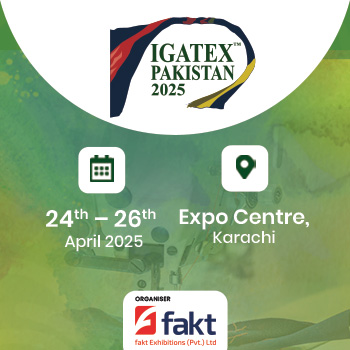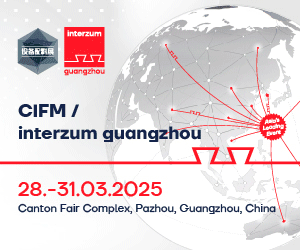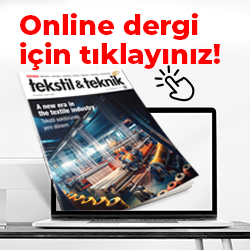 The technical textile raw material group eventually ensure that the cars become lighter and lighter.
The technical textile raw material group eventually ensure that the cars become lighter and lighter.
Compared to a figure of about 23 kilograms that is currently used in one new car, the fiber-based material portion will soon increase to 30 to 35 kilograms. The range of fiber-based materials available for car interiors in the form of constantly new compositions, coatings and characteristics is large. According to Commerzbank, the automobile market is the most important consumer of technical textiles. German manufacturers hold a world market share of 23 percent. In comparison to the average sales price per ton, Mobiltech, apart from Sportech and Protech, belongs to the range of applications having the highest value added. According to Commerzbank, completely new textile products could be created within a few years, such as textile displays, textiles allowing colour change and self-cleaning structures or reactive protecting textiles. In this connection, two interesting innovations come from Mönchengladbach and Aachen.
Protection against dirty inside roof linings of cars
Although Mönchengladbach has been a traditional textile branch place it was so far not considered an input generator for the automobile industry. In order to bring about a change in this respect, a good deal of development projects has been initiated by experts of the department textile and clothing technology (FTB) at the Niederrhein University of Technology. The department developed new functional equipment which provides a permanent protection against wet dirt on intensively used textile surfaces in car interiors. The basis of the cleaning effect which shall enable the use of bright fabrics and thus provide a more comfortable space feeling between the bonnet and the car boot, is a dirt-repellent equipment, for instance for seat covers. By this way wet dirt cannot penetrate into the fabrics and can be easily removed with an absorbent cloth. But can the protective effect be long-lasting? Dr. Kristina Klinkhammer who is responsible of the project underlines the proven high stability of the equipment for seat upholstery and the health safety of the material. Thanks to the use of silane components in the fabrics, a proper cleaning effect has been proven by means of a long-time test over 20.000 cycles where the fabric was subjected to high mechanical stress on a sort of abrasion automatic. Another benefit of the material is that the use of silanes allows a remarkable reduction of the required quantity of dirt-repellent fluorocarbons compared to conventional solutions.
However, the hazard of dry and tenacious dirt also exists on textile inside roof linings or covers for the various car pillars. These surfaces are mainly endangered by greying due to adhesion of dust. As a countermeasure the experts of the abovementioned department developed a protection mechanism which is based on silica, aluminum oxide or self-synthetized silica particles at the nanoscale and lower micrometer scale. The experts of Mönchenglach have created an adequate binding system as well. Mrs. Klinkhammer points out that surfaces prepared with such kind of protection can be easily and nearly completely freed from typical dry dirt by means of a conventional vacuum cleaner without the use of chemicals. In both cases, the industrial partners involved are examining how the results of the research work can be implemented in practice for further use in cars.
The combination of optical effect and practical benefit for the automobile industry should also be achieved by the implementation of another interesting university approach. The aim of the approach is the development of novel textile heating and lighting elements. In co-operation with industrial partners, the university scientist covered textile plate electrodes with special synthetic pastes possessing their own electric conductivity. By this way inside roof linings or car seats can gleam with a pale light. In such a manner the surfaces of seats, floor room and side linings could be heated with a minimum of energy input and without the need of inserting conductive yarns. Evelyn Lempa, project manager, underlines that the technology leap is remarkable for the branch because no boundaries will now be set to the design engineers and designers of textile base materials.
New carbon flooring for automobile decorative trims
Mesut Cetin, a textile scientist, who is very specialized in textile three-dimensional performs, is considered the father of the carbon at the institute of textile technology at Aachen University (ITA). His high-tech ground floor tiles, automobile and inner decoration trims as wells as tiles for heating purposes represent a completely new and innovative design material both for exterior and interior applications. The tiles can be manufactured and customized as far as colour, haptics and optics are concerned. The new development consists 95 percent of recycled fiber material from the automobile industry. The material looking like wood is long-lasting, chemically resistant and extremely robust. The carbon flooring provided with light-conducting fibers on the surface glows point by point. It can be used as trim in the car interiors, as decorative element on furniture, as floor covering in architecture or as staircase step with safety lighting. Since different materials are combined, no restraints exist with respect to colour, texture, patterns and geometry. By this a customized product design is possible. “We are able to imitate not only textures similar to wood by combining glass fiber fabrics and carbon fibers as stiffening textiles but also tree rings and knotholes”, says Cetin.
When being asked on his visions, the inventor at the Aachen institute for textile technology answers with three headwords: material development, entrepreneurial autonomy and investment partners. He informs that besides the lighting function a touch and heating function could be integrated as well into the carbon flooring which has been filed for a patent. By that it would be possible, for instance, that by touching an automobile trim in the area of heating a colour change can be produced from “blue = cold” to “red = warm” and in parallel the feeling how it gets warmer inside the car. Since only a small number of tiles made of carbon flooring exists as a prototype sample, Mesut Cetin is planning a spin off and the foundation of an own company. “The company could be started slowly in parallel to his activity as a department head”, explains Mesur Cetin. He is encouraged by the example of Dr. Andreas Roye. The former employee at the institute of textile technology at Aachen University (ITA) had taken leave of his scientific activity some years ago and founded a new company called Lucem which is engaged in the production of translucent concrete. Since then he is making history in the field of architecture by having built the world-wide first luminous concrete façade on a technical institute building in Aachen. “As soon as a noteworthy market for carbon flooring exists we shall require investment and production partners for the new company”, adds Cetin.










